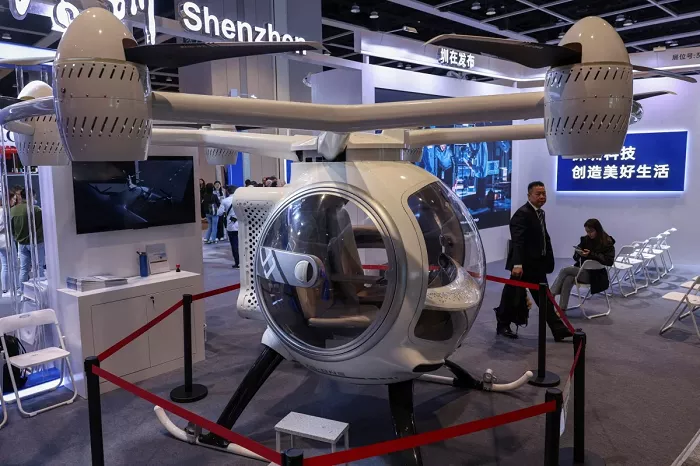Chinese developers of small, uncrewed aircraft are looking to expand into international markets, including the United States, despite facing a hefty 145% import tariff. The growing demand for low-altitude cargo and passenger flights has drawn the attention of companies in regions ranging from Brazil to the United Arab Emirates.
Lu Yong, production director at He Fei Hei Airlines, a Chinese company involved in building automated helicopter-like pods for aerial tourism, said foreign markets are more accepting of these new technologies. “The acceptance rate is higher abroad than in China,” Lu remarked, noting that international buyers view these products as innovative.
He Fei Hei Airlines, based in Anhui province, has already sold its aircraft to 19 countries, including Mexico, Spain, and Thailand. The company showcased its products at the InnoEX tech show in Hong Kong, joining 2,800 other exhibitors.
While some Chinese companies are focusing on the American market despite the new tariffs, Shenzhen Zero Zero Infinity Technology has continued its operations in the U.S. The firm, which sells drones in both the U.S. and Europe, is betting on its drones’ fast take-off speeds and AI technology to maintain a strong market presence.
Competitive Pricing and Market Potential
According to Jayant Menon, a senior fellow at the ISEAS-Yusof Ishak Institute in Singapore, Chinese companies have an edge in the global market due to their competitive pricing. “Production costs for American-made drones are often more than double those of Chinese-made drones, and that cost is usually passed on to consumers,” Menon explained.
I-Kingtec, a drone-network-cloud developer from Jiangsu province, also targeted the U.S. market before the tariff dispute escalated. Hollyway Group, a Singapore-based partner, launched their hardware and software products in the U.S. as well. Despite the tariffs, Hollyway marketing director Allan Zhang remains optimistic about the U.S. market, citing the need for automated inspection of electricity transmission towers, a task traditionally handled by more expensive American workers.
Expanding Beyond Domestic Borders
Chinese manufacturers have already penetrated the domestic market, with the low-altitude economy expected to be worth 2 trillion yuan (US$273.84 billion) by 2030. This sector encompasses both crewed and uncrewed aerial activities below 1,000 meters, including drone deliveries.
Zeng Quanhong, brand manager at Fcourier, a company in Guangdong province developing uncrewed aircraft for commuters and cargo, expressed confidence in both domestic and international markets. “We definitely hope we can export,” Zeng said, adding that the company is focusing on securing permits in China before considering exports.
Despite the looming U.S. tariffs, Zeng dismissed the concern as a “distant matter,” reflecting the company’s long-term optimism.


